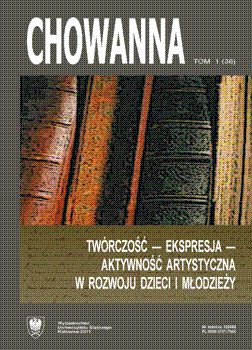The Creative Mix? Teacher’s Creative Leadership School Creative Climate and Students’ Creative Self-Efficacy
The Creative Mix? Teacher’s Creative Leadership School Creative Climate and Students’ Creative Self-Efficacy
Author(s): Maciej KarwowskiSubject(s): Psychology
Published by: Wydawnictwo Uniwersytetu Śląskiego
Keywords: creative self-efficacy
Summary/Abstract: Overall successes in school, work and life are caused by countless numbers of factors, and explored by different scientific disciplines. Among many conclusions drawn from the research conducted by educational psychologists, the role of self‑efficacy is worth highlighting. B a ndu ra’s works (1977, 1986, 1993) showed that the efficiency of students’ functioning depends not only on the level of abilities, but also on perceived self‑efficacy, namely an individual’s conviction that he or she is able to cope with problems. Numerous studies (see B a ndu ra, 1997 for a review) confirmed that students with the same level of abilities behave at different efficiency levels. The reason for it often lies in their perceived selfefficacy. A more recent work of B a ndu ra (1997) elaborated the concept of overall self‑efficacy and turned its detailed characteristic into specific self‑efficacies, also in the area of creativity. The assumption is that to solve problems creatively an individual must not only have creative abilities but also be characterized by a certain level of creative self-efficacy. The important question is what influences such creative self‑efficacy, and especially which teachers’ behaviors may stimulate it and how. The aim of this study is to show relations between teachers’ behaviors typical for transformational leadership and students’ self‑efficacy. The study was conducted in order to deepen our knowledge of the possible antecedents of creative self-efficacy in the classroom. Teachers’ transformational leadership is treated as a main independent variable which strengthens students’ confidence in their own creativity. However, the complexity of teacher-student relationship in the classroom suggests that there are many possible mediators of the relationships between teachers’ behaviors and students’ creative self‑efficacy. In this study two possible mediators were tested. The first one is students’ intrinsic motivation which is assumed to be influenced by teachers’ transformational leadership and which then translates into higher creative self-efficacy. The second mediator is the interpersonal climate in the classroom, understood as trust between students and teachers. It is expected that higher trust level may be caused by teachers’ transformational leadership and it may then render higher creative self-efficacy among students more likely.
Journal: Chowanna
- Issue Year: 2011
- Issue No: 36 (1)
- Page Range: 25-43
- Page Count: 19
- Language: English

